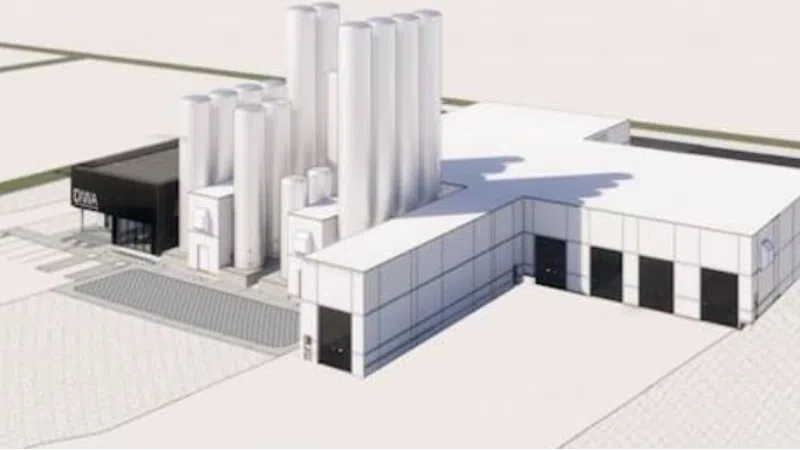Why are butter and cheese production up despite milk supply issues? How are dairy farmers adapting? Read on to find out.
Summary: In an ever-evolving dairy market, July saw notable shifts across various product categories. Despite struggling milk production, increased butterfat levels led to a rise in butter output, while Italian cheese varieties surged due to recovering food service demand. The whey protein market preferred higher value-added ingredients, and milk powder production lagged amid tight milk supplies and elevated premiums. Dairy farmers in July saw a 2.2% increase in butter and cheese output despite limited milk supplies. The Central area led with a 4.2% year-over-year gain, while the Western area saw a moderate 1.8% growth rate. Italian cheese production increased by 2.4%, Mozzarella rose by 3.6%, but American cheese production decreased by 5.8%. Whey protein isolate output surged 30.1% year over year, while dried whey output dropped by 25%. The decline in milk powder manufacturing due to tight milk supply led to a 10.4% drop in output levels, and rising dairy commodity prices have also been a concern. As dairy commodity prices continue to climb, dairy farmers face opportunities and challenges in navigating this dynamic landscape.
- Increased butterfat levels boosted butter production by 2.2% year-over-year in July despite milk production struggles.
- The Central region led butter output with a 4.2% increase, while the Western region experienced a growth of 1.8%.
- Italian cheese varieties, driven by recovering food service demand, saw a 2.4% rise, with Mozzarella production up by 3.6%.
- American cheese, particularly Cheddar, declined by 5.8%, indicating a shift in market preferences.
- Whey protein isolate production surged by 30.1% year-to-year, contrasting with a 25% drop in dry whey output.
- Milk powder production experienced a significant 10.4% decrease due to tight milk supplies and high premiums, marking a challenge for the industry.
- Rising dairy commodity prices present opportunities and hurdles for farmers in a fluctuating market landscape.

Have you ever wondered how it is feasible to increase butter and cheese output when milk supplies are limited? This contradiction is more than a fascinating oddity; it is an essential trend every dairy farmer should know. The increase in butter and cheese output, despite issues with liquid milk production, is a result of various factors such as improved manufacturing techniques, increased butterfat testing in the milk supply, and the industry’s ability to adapt to changing market demands. In July alone, butter output increased by 2.2% year over year, reaching 161.667 million pounds. Similarly, cheesemakers produced 1.191 billion pounds of cheese, representing a 1.9% rise over the same month last year. This is despite a 2.7% decrease in volume in California, a crucial dairy state. Understanding these dynamics will allow you to make more educated judgments regarding manufacturing techniques and marketing tactics. So, let’s investigate this trend and its prospective effects on the dairy farming scene.
Butter Production in July: Defying the Odds Amidst Milk Supply Fluctuations
Butter output in July demonstrated remarkable resilience despite shifting milk amounts. According to USDA figures, butter output for the month was 161.667 million pounds, a 2.2% rise over the previous year. This increase, consistent with the surge in butterfat testing in the country’s milk supply, is a testament to the industry’s ability to adapt and thrive in challenging conditions.
Regional production disparities show intriguing industry dynamics. The Central area led the way, with a solid 4.2% year-over-year gain, demonstrating the region’s excellent ability to sustain and enhance production. The Western area saw a very moderate 1.8% growth rate. Notably, California, a significant participant in the West, had a 2.7% volume reduction. Despite this, Western output has continued to grow.
These geographical results highlight the relevance of component levels in determining butter output. Maintaining high butterfat content will be critical to the industry’s future development as it faces continuous shortages in milk supply.
Cheese Production: Italian Varieties Surge, But Cheddar Struggles
In July, cheesemakers produced 1.191 billion pounds of cheese, up 1.9% over the previous year. This increased trend is mainly driven by a 2.4% increase in Italian cheese output. Mozzarella, a mainstay in local and international markets, had an even more astounding 3.6% gain. This expansion has been fueled by improving food service demand and substantial export activity, addressing the ever-increasing need for high-quality Italian cheese.
However, American variations reveal a different narrative. Cheddar cheese, a staple of American dairy, has seen a considerable drop. In July, production decreased to 314.327 million pounds, representing a steep 5.8% reduction year over year. Factors such as a lack of young Cheddar have led to higher spot prices for blocks and barrels, influencing overall market dynamics.
The disparity between expanding Italian cheese production and the decline of American kinds, such as Cheddar, demonstrates a change in consumer demand and market opportunity. It emphasizes the necessity for adaptation and strategic planning in the dairy business.
Whey and Protein Products: An Ever-Changing Market Landscape
Looking at the trends in whey and protein products indicates a dynamic and changing world. In July, whey protein isolate output increased by a staggering 30.1% year over year, hitting 16.109 million pounds. This growth reflects an increasing desire for higher-protein, value-added ingredients, which might be driven by increased consumer demand for protein-rich meals and drinks. On the other hand, dried whey output for human consumption fell drastically by 25%, reaching just 62.587 million pounds. This decrease might be linked to adjustments in production priorities and increased export demand, affecting local supply.
On the other hand, dried whey output for human consumption fell drastically by 25%, reaching just 62.587 million pounds. This is the lowest monthly production since 1984. The drop might be linked to adjustments in production priorities and increased export demand, affecting local supply.
These changes have a substantial impact on the whey industry. The decline in dry whey production has resulted in reduced stock levels, with stockpiles 27.7% lower at the end of July than the previous year and 6% lower than last month. This stock decrease may cause price volatility if demand exceeds supply in the following months.
These movements highlight the significance of dairy farmers and manufacturers keeping current with market demands and production trends. Managing this complicated terrain will require a flexible whey and protein manufacturing plan as consumer tastes change and global trade dynamics fluctuate. However, this also presents an opportunity for strategic planning and innovation, empowering stakeholders to shape the industry’s future.
Milk Powder Production: Navigating Through Tight Supplies and Elevated Costs
Milk powder manufacturing has significant challenges as it needs to catch up to other dairy categories. Tight milk supply and increased spot milk premiums have lowered output levels, with combined production of nonfat dry milk (NDM) and skim milk powder reaching just 184.269 million pounds in July, a 10.4% decline from the previous year.
Despite the decrease in output, manufacturers’ NDM stocks were only slightly higher at the end of July, up 0.4% over the previous year but down 1.3% from June. These historically low inventory levels indicate a tenuous equilibrium between supply and demand, with any increase in demand swiftly driving prices upward. Signs of this pressure are already evident, as the NDM price has lately risen from the limited range it has been trapped in since January 2023, signaling probable market movements.
This circumstance poses both obstacles and opportunities for dairy producers. While the scarcity of supplies may raise prices and profit margins for those who can create, it also emphasizes the need for strategic planning and investment in more efficient production systems.
Rising Dairy Commodity Prices: A Golden Opportunity or a Looming Challenge?
In recent weeks, dairy commodity prices have risen significantly. Cheddar blocks rose 6¢ from last Friday to $2.27/lb, while cheddar barrels gained 1.5¢ to close at $2.275/lb. Butter prices remained strong, increasing by half a cent to $3.175 per pound. After the week, nonfat dry milk (NDM) gained 3.5¢ to $1.365/lb.
Several reasons are influencing the price hikes. The scarcity of young Cheddar in blocks and barrels has contributed significantly to the price increase. Higher demand for Italian types and Mozzarella, improving food service demands, and robust exports highlight the cheese sector’s overall expansion. This dynamic benefits producers but puts pressure on supply, increasing prices.
Butter’s price resiliency is due to increasing butter production, particularly in the Central area, and growing butterfat levels in the milk supply. Despite the increased output, worries about supply linger, putting upward pressure on pricing.
NDM prices have been affected by continually low output and historically low inventory levels. Tight milk supply and high spot milk premiums have hampered production, while rising demand threatens to increase prices. These changes highlight the volatile nature of the NDM market.
These price swings provide dairy producers with both opportunities and problems. While increasing commodity prices may result in greater returns, the underlying supply restrictions and increased production costs demand careful management and strategic planning to navigate this changing market scenario. However, the potential for increased returns should instill a sense of optimism and motivation in dairy producers.
The Bottom Line
The dairy business has remarkable resilience, as seen by the high butter and cheese output despite continued milk supply issues. Butter production increased as butterfat levels rose, with the Central area leading the way. Cheese manufacturing also increased significantly, notably in Italian kinds such as Mozzarella, while American variants such as Cheddar lagged. The whey and protein products market saw significant changes, with whey protein isolates rising dramatically and dried whey falling sharply. Limited milk sources and rising prices hampered the production of milk powder. Still, commodity prices have risen, creating both possibilities and problems for dairy producers.
As we manage these volatile market patterns, will the resiliency shown in butter and cheese production continue to define dairy’s future, or are we on the verge of more significant shifts in supply and demand dynamics?
Learn more:
- US Milk Production Declines for 11th Month While Butterfat and Protein Rise
- Is the Summer Heat Finally Over? Dairy Farmers See Milk Production Stabilize, but Challenges Remain!
- Is 2024 Shaping Up a Disappointing Year for Dairy Exports and Milk Yields?
 Join the Revolution!
Join the Revolution!
Bullvine Daily is your essential e-zine for staying ahead in the dairy industry. With over 30,000 subscribers, we bring you the week’s top news, helping you manage tasks efficiently. Stay informed about milk production, tech adoption, and more, so you can concentrate on your dairy operations.







 Join the Revolution!
Join the Revolution!




